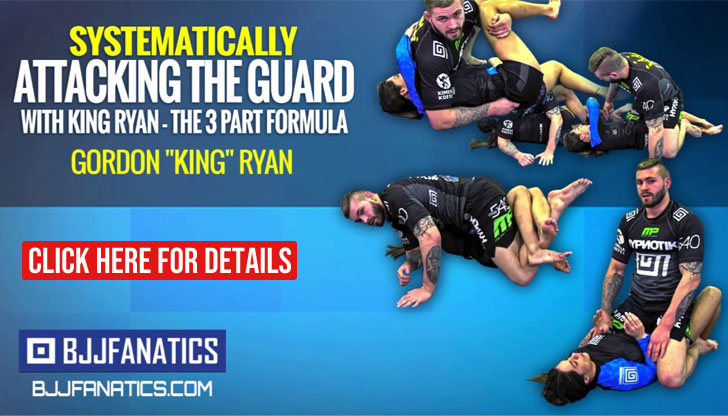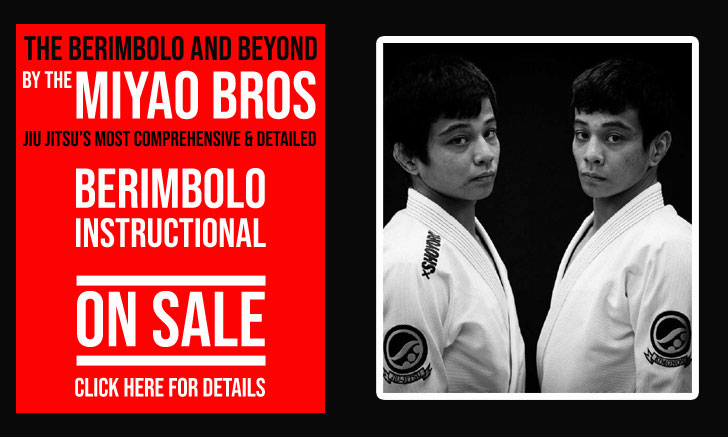The Berimbolo is the name given by Andre Galvao to a specific grappling movement, this movement was created by Brazilian Jiu Jitsu competitors having derived from the De La Riva Guard. This grappling position requires the guard player to spin upside-down in an attempt to disrupt the balance of his opponent. This spin will cause the guard player to either get a sweep (reverse the position) – which is usually called an helicóptero, or take control of his opponent’s back, which is a berimbolo. This position is one of the most popular trends of BJJ since it was first seen by the hands and feet of Samuel Braga during the mid 2000s decade, a position that gained mainstream notoriety with Rafael Mendes and was perpetuated by many other competitors such as Ary Farias, Joao, and Paulo Miyao and many, many others, especially in the lower weight classes of the sport.
How Did the Berimbolo Start?
According to Tatame Magazine in August of 2012, the father of the Berimbolo was Marcel Ferreira. Around 1993 Marcel was a purple belt who trained at the famous Carlson Gracie Academy, having (like many other members of the team) the De La Riva Guard as his favorite position. One of his training partners, by the name of Eduardo, would consistently pass his DLR guard by stepping back towards the hook. This killed the effectiveness of Marcel’s De La Riva. In trying to come up with a solution to this back step, Marcel Ferreira started inverting on the hook, developing from there a sweep and a back take. Positions he would have used in competition during the 1990s, including in the first world championship (1996).
When interviewed by BJJ heroes for this piece, Andre Galvao, the man who gave the name ‘Berimbolo’ to the position said: “Don’t think the position was created in the 90s. Marcel did the helicopter, but it is very different. The Berimbolo starts when the opponent puts his butt on the mat, like in a double guard pull position (…) I think the berimbolo only started a few years back.” Galvao went on to say:
The berimbolo doesn’t have a father, its an impoverished child born without a dad, now the kid became rich and famous and everyone wants to assume paternity. – Andre Galvao
The Berimbolo Comeback
Assuming the berimbolo started in the 1990s, the position stayed somewhat dormant for almost a decade in mainstream Jiu-Jitsu competitions. Its rebirth is attributed to Samuel Braga, who is seen using this inversion from De La Riva Guard at the world championships of 2005 (see below).
Though Braga was the first to revive this old position, it wasn’t until the Mendes brothers started using it relentlessly to win tournament after tournament of the black belt division, that the fans of the sport and the media, became completely aware of the position. The success of the Mendes brothers relied greatly on the Berimbolo, but the Mendes brothers did not rest on anyone’s laurels and took this clever scramble to the next level, adding the leg drag to the equation, a combination that became one of the most utilized in the sport.
The position was a tremendous success, but it raised the issue of the “knee reaping” rule, applied by the sport’s main organization (the IBJJF), a rule that bans locks twisting the knees. The foundation of the berimbolo begins with applying pressure on the knee with the de la Riva hook to take the back. The entry to the berimbolo occurs when, to resist this pressure, the opponent sits down. If they turn away instead, a different back take is available. In order to force the berimbolo some competitors were gripping the far sleeve, preventing the turn away. This was putting pressure on the knee with little chance to relieve it. The berimbolo also used a deep underhook on the shin, which added pressure to the knee making it effectively a foul punishable by disqualification according to the federation’s updated rules of 2012.
To avoid the DQ, berimbolo enthusiasts relinquished the underhook on the shin, making the position less effective, but still very worthwhile performing.
- Samuel Braga
- Rafael Mendes
- Guilherme Mendes
- Ary Farias
- Paulo Miyao
- Joao Miyao
- Caio Terra
- Gianni Grippo
- Mickey Musumeci
- Levi Jones-Leary
The real berimbolo, by Mendes Bros
Bermbolo as defense from X-Guard by Guilherme Mendes
Paulo Miyao vs Takuto Kako
Miyao Brothers by BJJ Hacks
Picture on banner by Jits Mag.
















